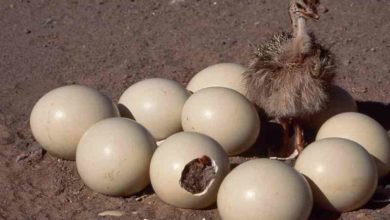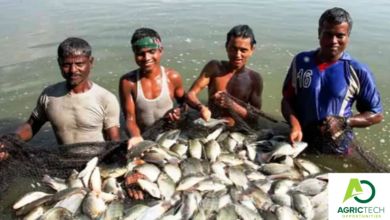Understanding The Ostrich Industry In Zimbabwe and South Africa 2023 Guide 2023

Host
Ostrich Industry
Target Audience
Ostrich Farmers
Introduction
The ostrich industry in Zimbabwe and South Africa is an important sector that contributes to the economies of both countries. Ostrich farming mainly focuses on the production of meat, hides and feathers.
Ostrich farming
•Feathers – decorative, fashion, toys, feather dusters, cleaning fine material
•Skin – Soft, durable and fashionable leather, used to make fashion products (shoes, bags, purses, jackets) and upholstery
•Meat – high value, lean and healthy; 10-20kg exportable, from the legs in the ratio 3:1 (steaks to fillets)
•Other products –eggs, live birds, ostrich oil
Zimbabwe has a long history of ostrich farming, with the industry dating back to the early 1900s. The country has favorable climatic conditions and vast open spaces, making it suitable for ostrich farming. Ostrich farming in Zimbabwe is mainly concentrated in the Mashonaland Central, Mashonaland East, and Matabeleland North provinces. The industry has experienced some challenges in recent years due to economic instability and land reform policies, but it still plays a vital role in the country’s agricultural sector.
Ostrich Leather


Where are ostriches produced in RSA?
•Western and Southern Cape (75%)
•Eastern Cape (20%)
•Other provinces of South Africa (5%)
•The Klein-Karoo in the Southern Cape Province is the ostrich capital of the world
South Africa is the largest producer of ostrich products globally and has a well-established ostrich industry. The country has a long history of ostrich farming, dating back to the 1860s South Africa’s favorable climate, extensive grazing lands, and advanced farming practices have contributed to its dominance in the industry. The Western Cape, Eastern Cape and Northern Cape provinces are the main regions for ostrich farming in South Africa.
Ostrich Meat


Both Zimbabwe and South Africa export ostrich products to international markets, including meat, leather, feathers, and eggs. Ostrich meat is highly sought after for its low-fat and nutritional value. The leather industry utilizes ostrich hides to produce high-quality leather products, such as handbags, shoes, and belts. Ostrich feathers are used in the fashion industry for decorative purposes, including hats, boas, and costumes.
Feathers

Ostrich meat value

| Product | Meat | Skin | Feathers |
| Quality attributes | Red meat, taste similar to lean beef, low fat, high protein, Ca & Fe | High quality; soft; the strongest commercial leather | Decorative, dusters, painting, fashion, toys |
| Av. Yield (10-14 months) | 34-41 kg | 4.2m2 (1.0-1.5kg) | 1.4-1.8 kg |
| Relative value (SSA) | 45% | 45% | 10% |
| Relative value (EU) | 75% | 25% | – |
Ostrich vs. beef
| Ostriches | Cattle | |
| Gestation/incubation (d) | 42 | 280 |
| Offspring per year | 40 | 1 |
| Conception to slaughter (d) | 407 | 645 |
| Meat (kg) | 1 800 | 250 |
| Leather (m2) | 50.4 | 2.7 |
| Feathers (kg) | 36 | – |
The SA Ostrich Industry
•Foreign currency through the export sales of healthy, low-fat ostrich meat; luxurious leather and feathers
•Ostrich feathers were responsible for the birth of farmed ostrich
•Domestication saved the species from extinction
•Meat comes from the leg, thigh, and back; no breast muscle like in chickens and turkeys
ALSO READ: Approved Principles of Dairy Cow Nutrition
•RSA is world leader in ostrich production
–65% of the world’s ostriches and 80% of global ostrich market share
–Generate >R1.2 billion annually (62% meat, 32% leather, 6% feathers)
The South African Ostrich Business Chamber (SAOBC)
–Umbrella body that represents the industry
–its main role is to ensure the sustainability and profitability of the industry
Main member organisations of the SAOBC
–SAOPO (South African Ostrich Producers Organisation)
983 farms, 345 export registered
–NOPSA (National Ostrich Processors of South Africa)
Abattoirs and tanneries
Advantage of SA
–Ostrich farming was started in SA in 1864
–natural conditions in South Africa are also ideal for ostrich production
Zimbabwe Ostrich Industry
•Has practically collapsed, since 2005
•Ostrich industry inception was in 1985
•The Ostrich Producers Association (TOPAZ)
–Established in 1985 to monitor and control operations and ensure strict export controls
ALSO READ: Starting Your Own Dairy Enterprises And Becoming A Dairy Farmer In South Africa
4 SBUs, two for Mashonaland and 2 for Matabeleland
–Abattoirs: COPRO Ltd. (Norton) and BOP Ltd. (Bulawayo)
–Tanneries: SET (Pvt.) Ltd (Harare) and PT Royal Ostrindo (Pvt.) Ltd (Bulawayo)
The ostrich industry in both countries has faced challenges in recent years, including disease outbreaks, economic instability, and changing market demands. However, efforts are being made to improve the industry’s sustainability and competitiveness. This includes implementing biosecurity measures, promoting research and development, and exploring new markets.
Overall, the ostrich industry in Zimbabwe and South Africa plays a significant role in their respective economies, providing employment opportunities and contributing to agricultural exports.
ALSO CHECK: 4 Ways To Increase Live Weight In broilers And Egg Size In layers
For more updates On Agric Tech Opportunities kindly join the social groups below:




